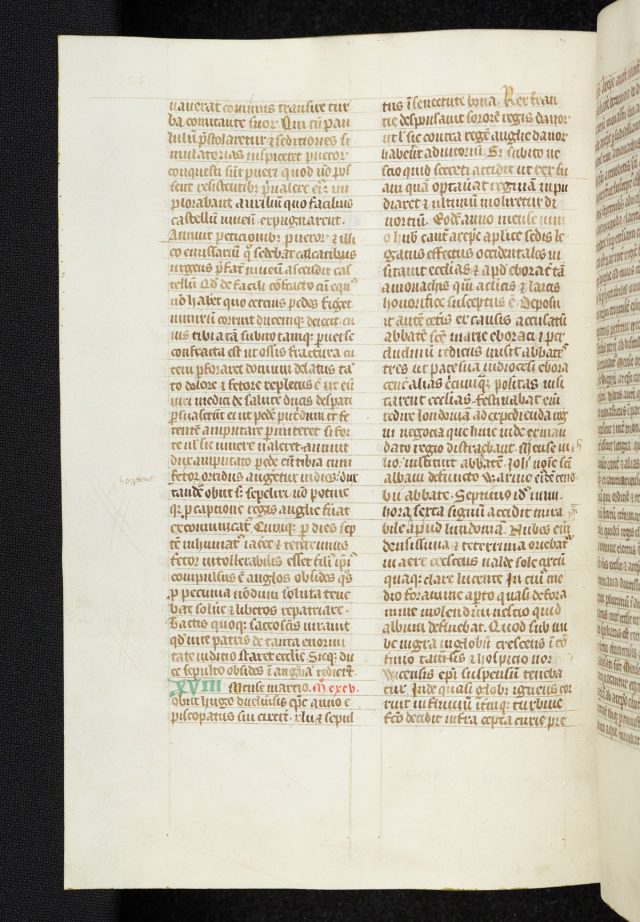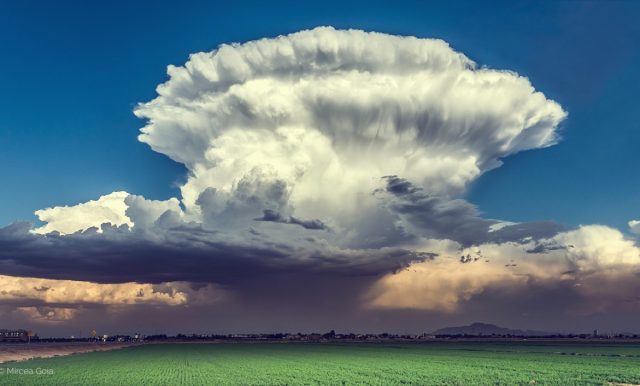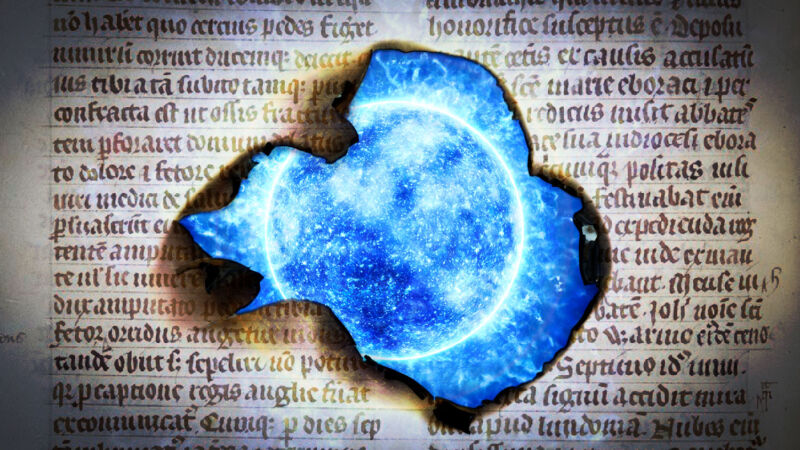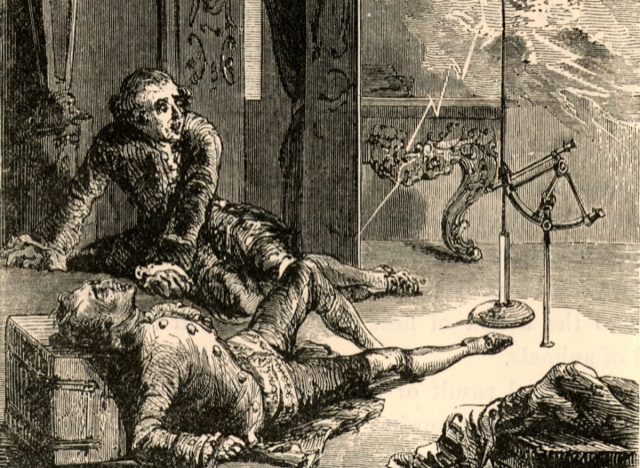On October 21, 1638, people were congregating at a church at Widecombe-in-the-Moor, in Devon, England, when a severe thunderstorm broke out. Witnesses described an 8-foot ball of fire hurtling through the church, tossing large stones from the walls to the ground, smashing pews and windows, and filling the church with smoke and the pungent odor of sulfur. Four people died and many more were injured in what has been widely recognized as the earliest known account of ball lightning in England—until now.
A British historian and a retired physicist have found an even earlier credible account of ball lightning in the writings of a 12th-century Benedictine monk, Gervase of Christ Church Cathedral Priory in Canterbury. According to a recent paper published in the journal Weather, Gervase of Canterbury recorded in his Chronicle a "marvelous sign" that "descended near London" on June 7, 1195. The sign was a "fiery globe" emerging from below a dark and dense cloud, and it predates the Widecombe-in-the-Moor account by nearly 450 years.
“Ball lightning is a rare weather event that is still not understood today," said co-author Brian Tanner of Durham University (emeritus). “Gervase’s description of a white substance coming out of the dark cloud, falling as a spinning fiery sphere and then having some horizontal motion is very similar to historic and contemporary descriptions of ball lightning. If Gervase is describing ball lightning, as we believe, then this would be the earliest account of this happening in England that has so far been discovered.”

As we've previously reported, ordinary lightning occurs due to the ionization and dissociation of molecules in the air (a process with the awesome name "dielectric breakdown"), which occurs during a static electric discharge between clouds and the ground. Ball lightning is much rarer, to the point where some have even postulated that it's actually a hallucination rather than a real weather phenomenon. As the name suggests, ball lightning appears as a spherical or spheroidal ball of light, between one centimeter and one meter in size and variously colored as purple, green, white, or orange. Just like normal lightning, ball lightning seems to occur primarily during thunderstorms. Ball lightning can persist for a few seconds, and the spheres travel horizontally close to ground level.
Tanner and Gasper were scouring medieval archives for reports of celestial phenomena when they came across Gervase of Canterbury's Chronicle. Much of the monk's writing concerned the priory's day-to-day operations—including a detailed account of rebuilding the cathedral's choir after a fire in 1174—as well as disputes with neighboring houses and an Archbishop of Canterbury. But Gervase was also fascinated by natural phenomena like eclipses, floods, famines, earthquakes—and ball lightning.
Here is the full account, translated from the Latin:
On the 7th of the ides of June [1195], around the sixth hour, a marvellous sign descended near London. For the densest and darkest cloud appeared in the air growing strongly with the sun shining brightly all around. In the middle of this, growing from an uncovered opening, like the opening of a mill, I know not what [was the] white colour [that] ran out. That, growing into a spherical shape under the black cloud, remained suspended between the Thames and the lodgings of the bishop of Norwich. From there a sort of fiery globe threw itself down into the river; with a spinning motion it dropped time and again below the walls of the previously mentioned bishop’s household.

But just how credible was the monk's account, given that it was clearly based on a second-hand report? The evidence points to a sober, careful, and reliable chronicler.
"He reported dates and times of solar eclipses remarkably accurately and comprehensively," the authors wrote. The same was true with lunar eclipses. "These are all the more impressive when considering that observation of partial eclipses was visually challenging in medieval times. In a detailed account of the partial eclipse of 13 September 1178, Gervase accurately describes the turning of the horns of the partly obscured solar disc to point downwards, as well as the changing colours close to maximum eclipse."



3175x175(CURRENT).thumb.jpg.b05acc060982b36f5891ba728e6d953c.jpg)


Recommended Comments
There are no comments to display.
Join the conversation
You can post now and register later. If you have an account, sign in now to post with your account.
Note: Your post will require moderator approval before it will be visible.